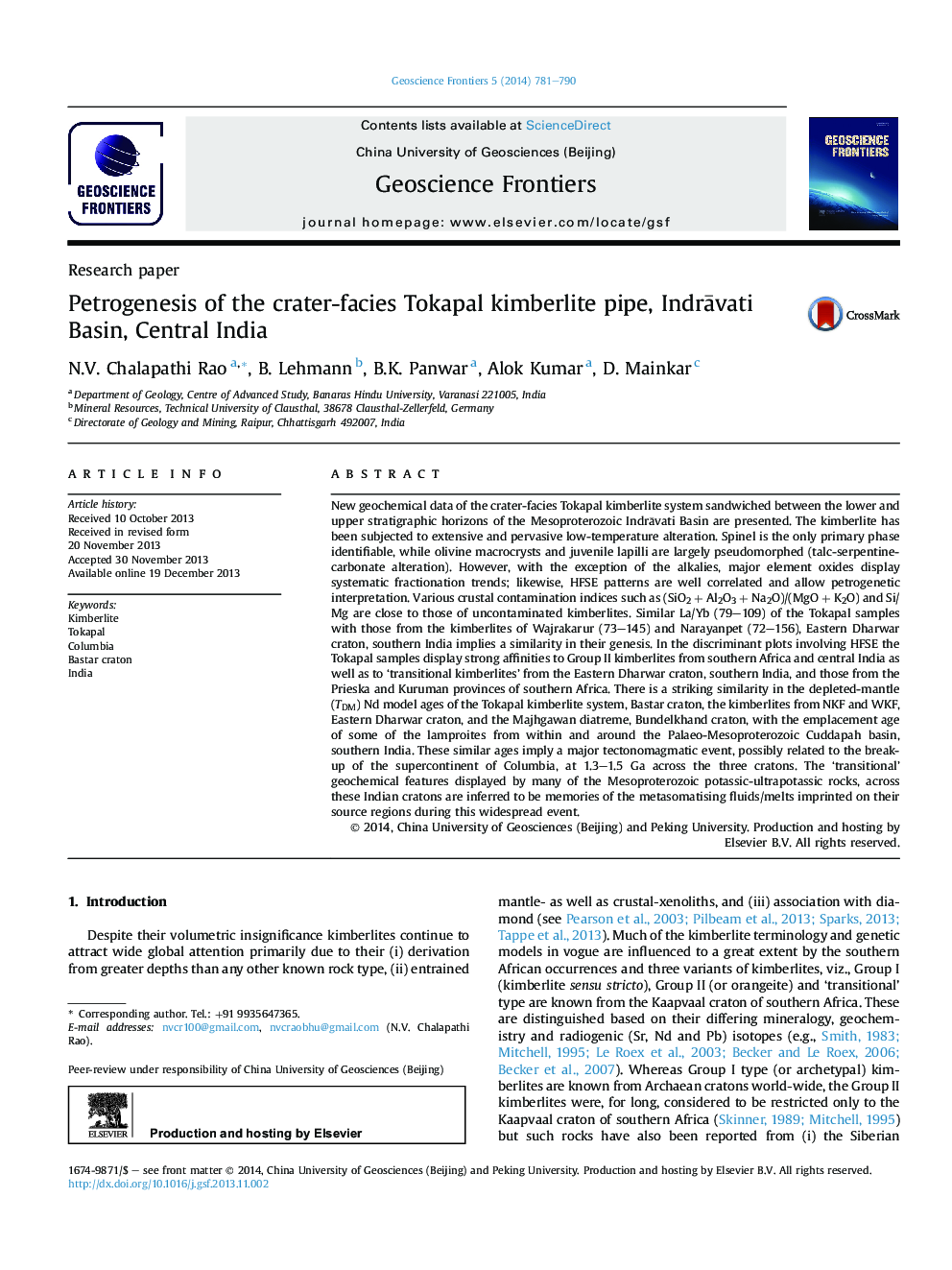| کد مقاله | کد نشریه | سال انتشار | مقاله انگلیسی | نسخه تمام متن |
|---|---|---|---|---|
| 4681688 | 1348867 | 2014 | 10 صفحه PDF | دانلود رایگان |

• New geochemical data of crater-facies Tokapal kimberlite system from Mesoproterozoic Indrāvati Basin presented.
• Major oxide variations and high-correlation of HFSE patterns exclude effects of contamination.
• Display strong affinities to Group-II as well as to ‘transitional kimberlites’.
• Source enrichment related to the break-up of supercontinent of Columbia at 1.3–1.5 Ga.
New geochemical data of the crater-facies Tokapal kimberlite system sandwiched between the lower and upper stratigraphic horizons of the Mesoproterozoic Indrāvati Basin are presented. The kimberlite has been subjected to extensive and pervasive low-temperature alteration. Spinel is the only primary phase identifiable, while olivine macrocrysts and juvenile lapilli are largely pseudomorphed (talc-serpentine-carbonate alteration). However, with the exception of the alkalies, major element oxides display systematic fractionation trends; likewise, HFSE patterns are well correlated and allow petrogenetic interpretation. Various crustal contamination indices such as (SiO2 + Al2O3 + Na2O)/(MgO + K2O) and Si/Mg are close to those of uncontaminated kimberlites. Similar La/Yb (79–109) of the Tokapal samples with those from the kimberlites of Wajrakarur (73–145) and Narayanpet (72–156), Eastern Dharwar craton, southern India implies a similarity in their genesis. In the discriminant plots involving HFSE the Tokapal samples display strong affinities to Group II kimberlites from southern Africa and central India as well as to ‘transitional kimberlites’ from the Eastern Dharwar craton, southern India, and those from the Prieska and Kuruman provinces of southern Africa. There is a striking similarity in the depleted-mantle (TDM) Nd model ages of the Tokapal kimberlite system, Bastar craton, the kimberlites from NKF and WKF, Eastern Dharwar craton, and the Majhgawan diatreme, Bundelkhand craton, with the emplacement age of some of the lamproites from within and around the Palaeo-Mesoproterozoic Cuddapah basin, southern India. These similar ages imply a major tectonomagmatic event, possibly related to the break-up of the supercontinent of Columbia, at 1.3–1.5 Ga across the three cratons. The ‘transitional’ geochemical features displayed by many of the Mesoproterozoic potassic-ultrapotassic rocks, across these Indian cratons are inferred to be memories of the metasomatising fluids/melts imprinted on their source regions during this widespread event.
Figure optionsDownload as PowerPoint slide
Journal: Geoscience Frontiers - Volume 5, Issue 6, November 2014, Pages 781–790